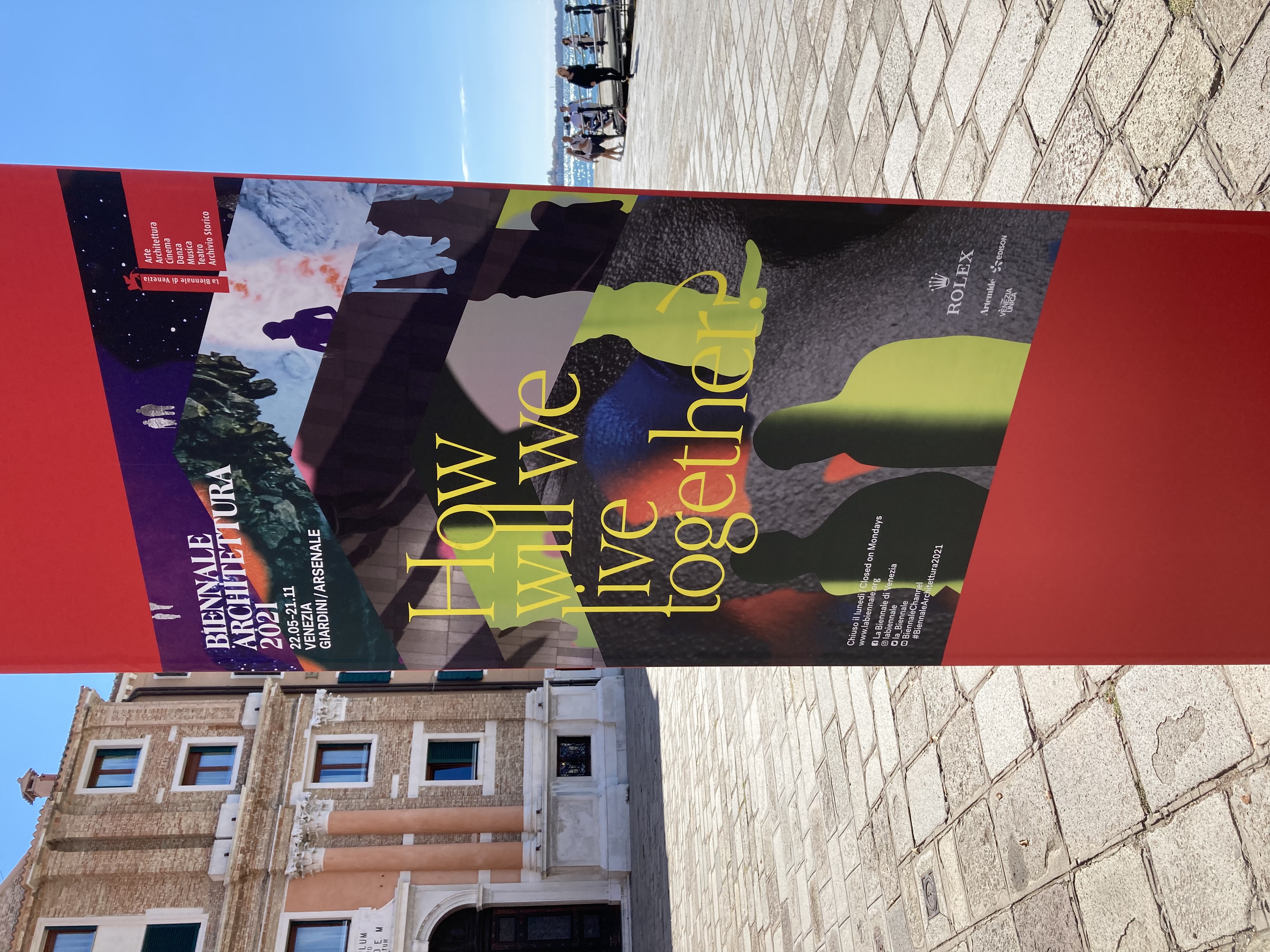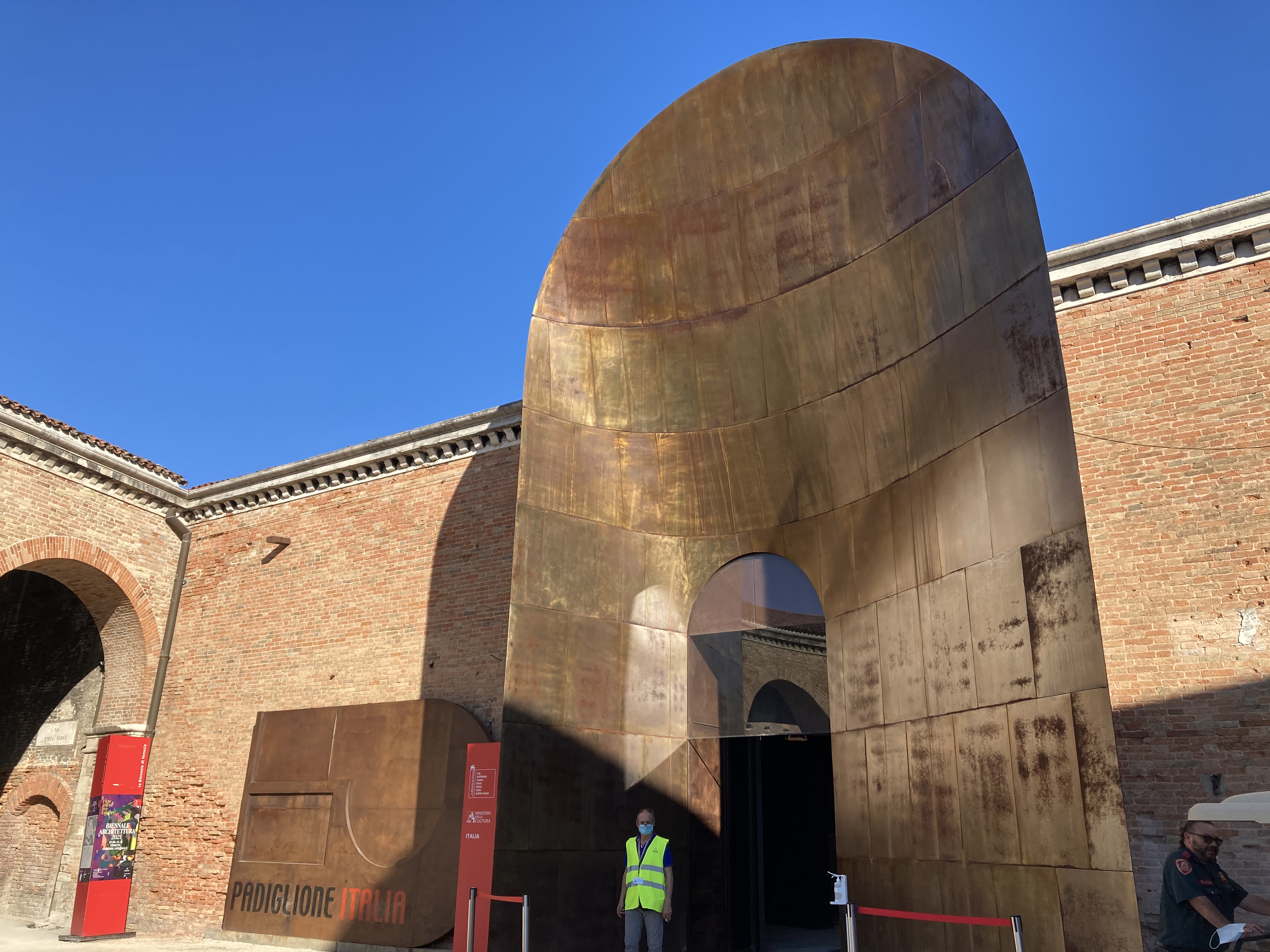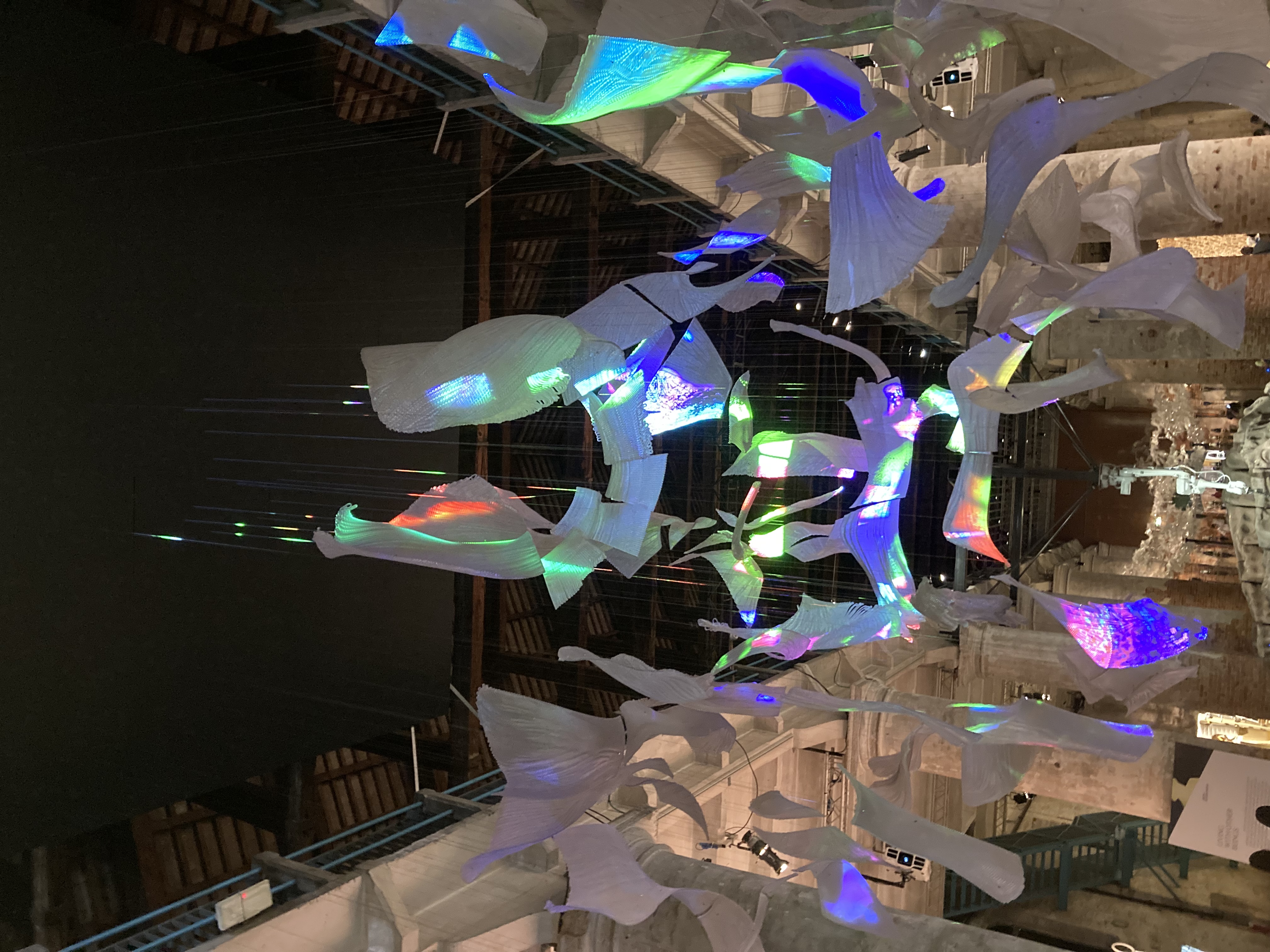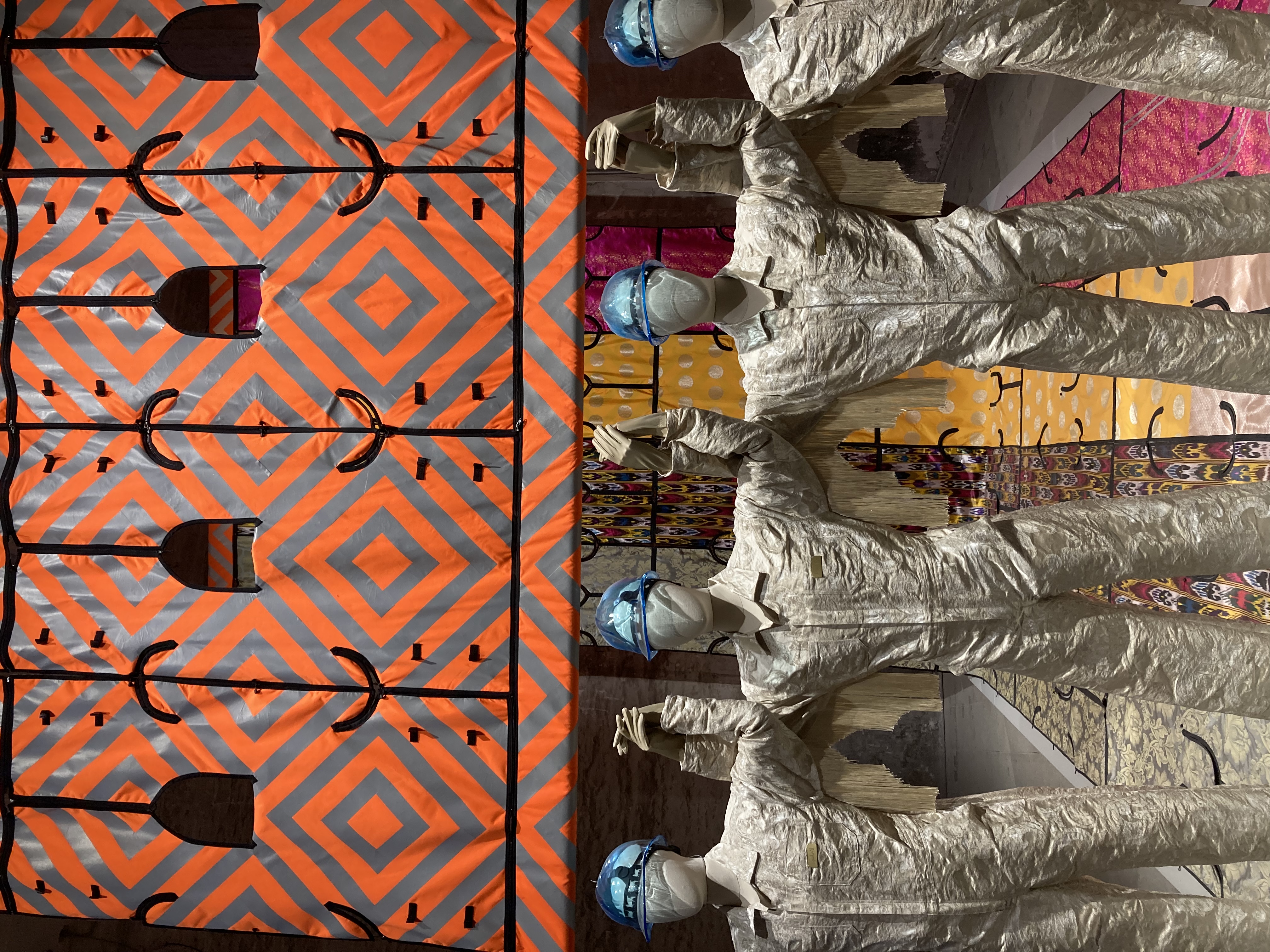Resilience and communities: URBACT at the Venice Architecture Biennale
Edited on
24 November 2021“How will we live together?” asks the 17th International Architecture Exhibition. URBACT has some answers.

Resilient communities can be defined as those where the effort of reacting to rapid changes is a collaborative exercise: in a few words, where collaboration among people contributes to finding solutions to the challenges of the cities we live in.
‘Resilient Communities’ is also the title of the Italian Pavilion at the 17th International Architecture Exhibition at the Venice Biennale. The pavilion proposes an interesting reflection on the role of cities, and architecture in general, to respond to the ambitious question featured in the title of this year’s Exhibition: “How will we live together?”.
 The main elements of the URBACT programme – the active engagement of residents and stakeholders, definition of integrated action plans to be implemented in the medium and long term, and collaborative governance of challenges connected to the different dimensions of urban sustainability – can all be considered part of the answer to this question posed by the Exhibition’s curator, internationally renowned architect Hashim Sarkis.
The main elements of the URBACT programme – the active engagement of residents and stakeholders, definition of integrated action plans to be implemented in the medium and long term, and collaborative governance of challenges connected to the different dimensions of urban sustainability – can all be considered part of the answer to this question posed by the Exhibition’s curator, internationally renowned architect Hashim Sarkis.
The relevance of the URBACT methodology as part of a wider reflection on future models of inhabiting urban spaces is particularly tangible in Italy. Not only considering the high number of cities involved in URBACT networks, but also due to the role that the programme is playing in the national urban debate and in fostering connections among local decision-makers, stakeholders, architects and practitioners.
These aspects pushed the curator of the Italian Pavilion, Alessandro Melis, to invite the representative of the National URBACT Point for Italy to be part of the Pavilion’s Advisor Board. The objective was to include the experiences of the Italian and European cities of URBACT in the wider picture composed by different visions on the contemporary city.
URBACT and the collaborative mapping of community resilience
The Italian Pavillon, a true cultural laboratory for rethinking the role of architects and cities on how we live together, is showcasing the complexity of relations among urban spaces, nature and people, with a dense programme of activities and events from 22 May to 21 November 2021.
 The National URBACT Point for Italy was involved in mapping stories of community resilience, together with City Space Architecture and Unipolis Foundation. The main focus of this mapping, set to continue after the end of the Biennale Exhibition, was on stories carried out at different urban levels, from small municipalities to metropolitan areas. This highlighted the role of active residents’ participation in improving the capacity of cities to respond to rapid changes and hardships.
The National URBACT Point for Italy was involved in mapping stories of community resilience, together with City Space Architecture and Unipolis Foundation. The main focus of this mapping, set to continue after the end of the Biennale Exhibition, was on stories carried out at different urban levels, from small municipalities to metropolitan areas. This highlighted the role of active residents’ participation in improving the capacity of cities to respond to rapid changes and hardships.
The action of collaborative mapping, available online or accessible through a QR code at the Italian Pavilion, was based on a selection of some of the most interesting solutions developed in diverse URBACT networks. These include a participatory scheme for the creation of new green spaces in Potenza, shared in the Resilient Europe Action Planning Network, and the opening of new public parks and infrastructure in Casoria, co-designed with support from the Sub>Urban network.
The mapping also explores practices adapted and transferred in URBACT Transfer Networks, such as the tools to tackle urban poverty implemented by Bari in the framework of Com.Unity.Lab or the models of urban co-governance transferred by Naples to other EU cities in the Civic eState network.
Activities developed under the Urban Innovative Actions (UIA) programme and then transferred with the UIA-URBACT Transfer Mechanism are also featured. Examples include Turin’s re-use of public spaces and underused structures developed with Co-City, and transferred to other cities in the CO4CITIES network, as well as Milan’s model promoting the agri-urban economy, which is being transferred to NEXT AGRI network partners.
All these stories emerging from URBACT networks, narrated by the civic officials and elected representatives who implemented them at local level, have been making an important contribution to reflexions on the future of cities promoted by the Italian Pavillon. These practical experiences are presented alongside the principles of community resilience that were being studied by academics and experts well before Covid-19 raised the urgency of consolidating innovative urban solutions.
Events at the Italian Pavillon
 These resilient city solutions were presented to national and international audiences in two seminars organised by the National URBACT Point for Italy in the arena of the Italian Pavillon on 21 and 22 September 2021. Representatives of Italian and European cities highlighted examples of community resilience, and showed how methodologies such as those promoted by URBACT are helping improve the governance of urban challenges.
These resilient city solutions were presented to national and international audiences in two seminars organised by the National URBACT Point for Italy in the arena of the Italian Pavillon on 21 and 22 September 2021. Representatives of Italian and European cities highlighted examples of community resilience, and showed how methodologies such as those promoted by URBACT are helping improve the governance of urban challenges.
While the first meeting was mostly focused on an Italian perspective, the second enlarged the reflection to include the curators of the Slovenian Pavilion, National URBACT Points (Spain and Slovenia) and the cities of Madrid (ES) and Cluj Napoca (RO), which are testing similar methodologies of civic imagination and active involvement of residents and stakeholders on topics such as urban security or the future of work.
The diversity of the experiences presented in Venice makes clear how different models of community resilience are shaping the future of public spaces, city services and urban infrastructures to respond to hardships and unexpected events.
The Peccioli Charter and the legacy of the debate on community resilience
 The active contribution of cities and communities to reach the global goals on climate, a theme that re-emerged strongly from COP26, is one of the most relevant possible evolutions of the concept of community resilience in the years ahead.
The active contribution of cities and communities to reach the global goals on climate, a theme that re-emerged strongly from COP26, is one of the most relevant possible evolutions of the concept of community resilience in the years ahead.
This approach was also shared by the Peccioli Charter, the document signed by all the members of the Italian Pavilion’s Steering Committee, which aims to be “a Constitution of the nation of the Italian resilient communities”. The document was officially launched in November 2019 in Peccioli, an Italian village which turned a wasteland site into a cultural and artwork space for all the community, a tangible example of resilient community. Meant as a legacy of the Pavilion, it defines the commitments that resilient communities need to put in practice in the medium and long terms. Among these, promoting knowledge and innovation, re-imagining cities and sharing urban spaces, being smart and anti-fragile.
These are the sorts of actions being implemented by the cities and communities that are using the URBACT methodology to increase resilience, in the sense of “being brave communities, able to put in practice a permanent revolution, to adapt to rapid changes and to offer endless opportunities for reaching the UN’s Sustainable Development Goals,” as stated in the conclusions of the Peccioli Charter.
Find out more
- Mapping of resilient communities
- Resilient Communities, Italian Pavilion at Venice Biennale 17th International Architecture Exhibition
- URBACT page on Climate Action
Photos by Simone d’Antonio
 Submitted by Simone d'Antonio on
Submitted by Simone d'Antonio on
